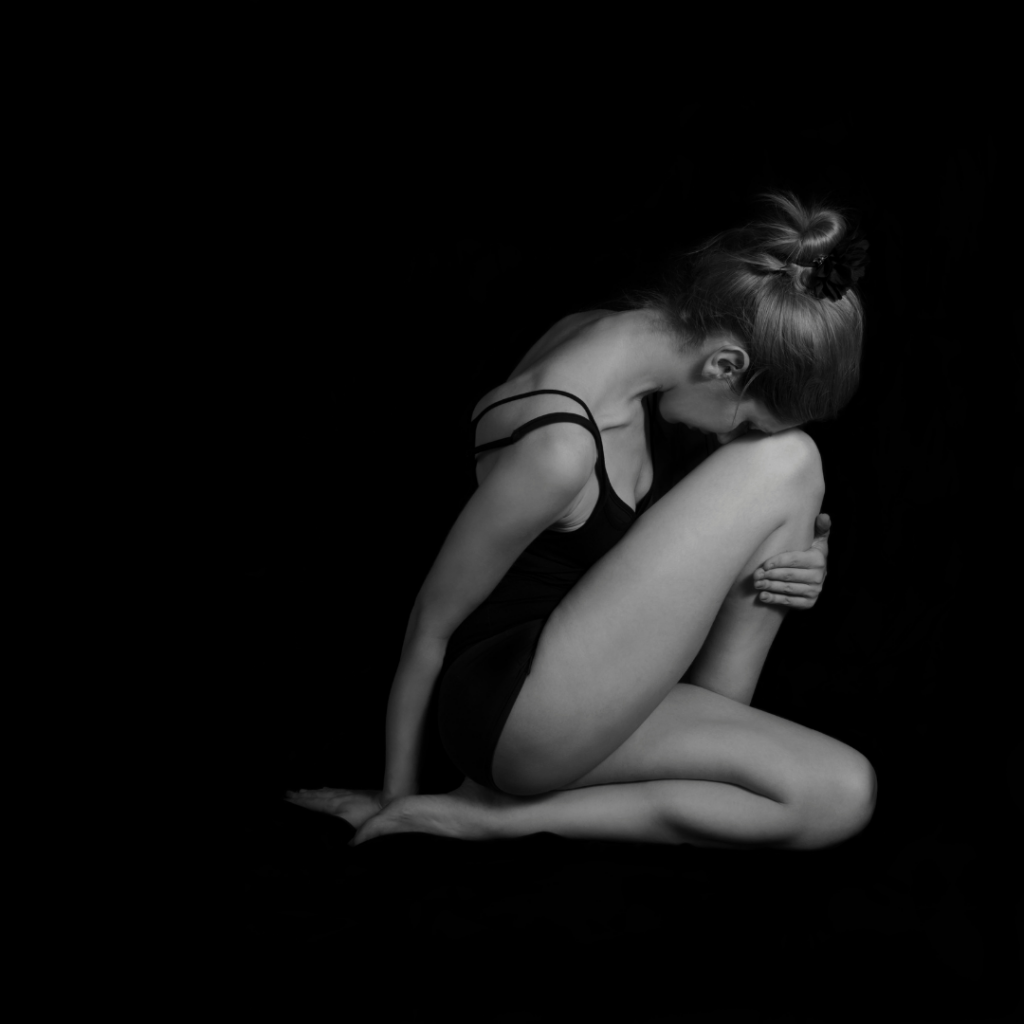’I’ve spent my entire life in the ballet world, and I don’t think I’ve ever spoken to a single female dancer that hasn’t either experienced disordered eating or an actual eating disorder. So often, it is the reason their careers end, whether the disorder itself is what causes them to stop dancing or, like me, are injured as a result of years of poor nutrition. It’s so normalized in the dance community I didn’t even think I had an eating disorder because my behaviour was exactly what I was surrounded by for the majority of my life. Even when it wasn’t the full-blown anorexia it developed into later, I was by no means taking care of my body. Barely eating during the day, being praised for not getting my period because it meant my body fat levels were low, but still being told to lose weight to “compensate for my height” all while hardly 18, while my body is trying to go through puberty. When you tell a young girl that her only worth is in her body, and that if it ever were to change, she’d essentially be worthless in the eyes of those at the front of the room, you’re not only lying to her, but you’re setting her up for immense distress the moment she begins to grow into a woman. Being told repeatedly that my body was my only asset, that if I didn’t have this naturally long and lean physique, I’d have nothing. That’s something that I took in and held up as the truth for years. Never questioning this statement, never thinking to assign my worth to my intelligence, or compassion, or drive, just my body in all its superficiality.
As I got older, I began witnessing my peers grow into women, and saw them be ignored, or shamed, or sexualized daily in class and rehearsals. I was so afraid of having it happen to me. I didn’t hit puberty until I was 18, and so I figured that I would just always look like a ten-year old. To go from being a dancer in a prepubescent body to a dancer with a woman’s frame in short period of time, and so late, isn’t just uncomfortable physically, but mentally. I was terrified of my changing body and hated that now I was also one of those dancers being sexualized and shamed for how I looked. I fought against my natural self with ounce of me. My eating disorder began as an attempt to revert back to my child body, to protect myself. And it eventually resulted in me having to quit ballet.
When I finally received help, it was only after I had pushed my body to the point of injury due to years of poor nutrition and overuse. At that point, I was in total denial of my disorder, and attributed my behaviour to “staying in shape” while I was off from ballet. I was sat down by my therapist who looked me straight in the eyes and told that if I continued with what I was doing to myself, I would die. It took those words to snap me out of this state, where the goal was thinness at any cost, where my safety and my value to society was held in shrinking myself.
While I am no longer in that same lethal headspace, my self-worth is still very much entrenched in my physical being. But it’s no longer the same fight that it was at the beginning. I’m learning to forgive myself for putting my body through years of starvation and overuse, ultimately sabotaging my own career by placing weight at the forefront of my goals. I’m learning where these patterns come from, I’m tracing them all the way back to its roots. And in that there is awareness, and in awareness there is power.
The recent New York Times article, which looked promising, was rather disappointing in terms of how resigned it seemed to the toxicity of ballet’s culture. I admire the dancers in the interview for being so open about their own struggles, however the way the article is constructed leaves me feeling like the we’ve already accepted that this is just “how it is”. How can we move towards creating a healthier work environment when we’re resigned to this standard, where a weight gain of 6lbs during a break due to a global pandemic causes a woman to think she no longer looks anything like a ballerina? How can the dance world strive for body acceptance when the costumes matter more to the company than the dancers wearing them? I was raised in this world.
I understand the need to be in shape, and I understand desire for the aesthetic. What I don’t understand is the need to create an environment in schools and companies that leaves dancers riddled with eating disorders, among other mental health problems. This culture of thinness as the absolute goal, whether it’s promoted openly in the studio or not, must change. At some of my lowest weights, when I was clearly very unhealthy, at no point was there ever any concern shown for my health. If anything, I was praised for how I looked. How is rewarding starvation contributing to anyone’s artistic development? Why is the desired physical aesthetic, for the most part, that of a prepubescent child? It is not necessary; it is not sustainable, and it is entirely unethical. I’m meant to look like a woman, not ten-year old. I refuse to accept that the only way to have dancers look good on stage is through a rhetoric of idolizing extreme thinness above all else. Art does not require suffering, smallness does not hold the key to being powerful and gorgeous in one’s discipline.’
Emily is a former ballerina from Vancouver, BC. She trained at Goh Ballet Academy, and spent a year as a Dutch National Trainee – now European School of Ballet. She is starting her degree in Literary Studies at the University of Amsterdam in the fall, and hopes to pursue a career in education around mental health in dance.




